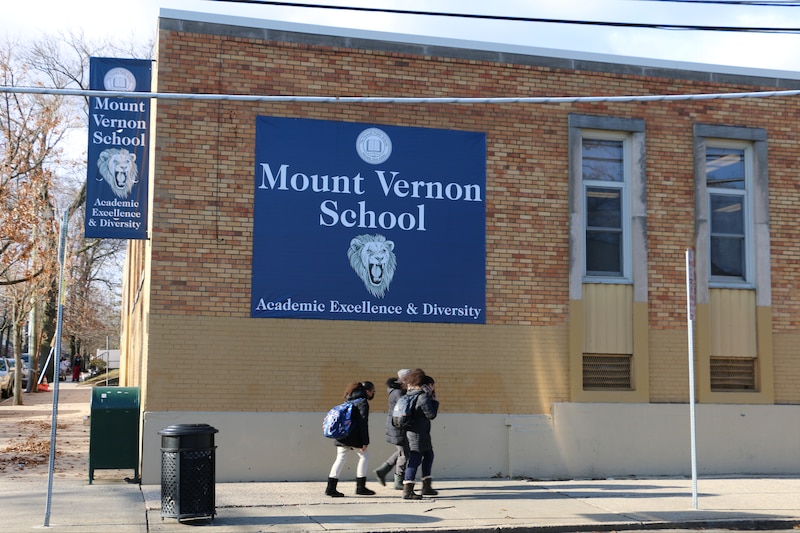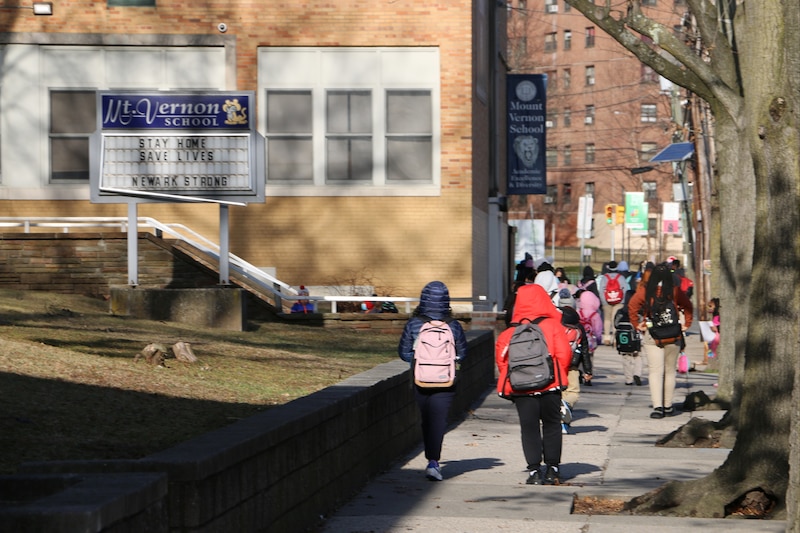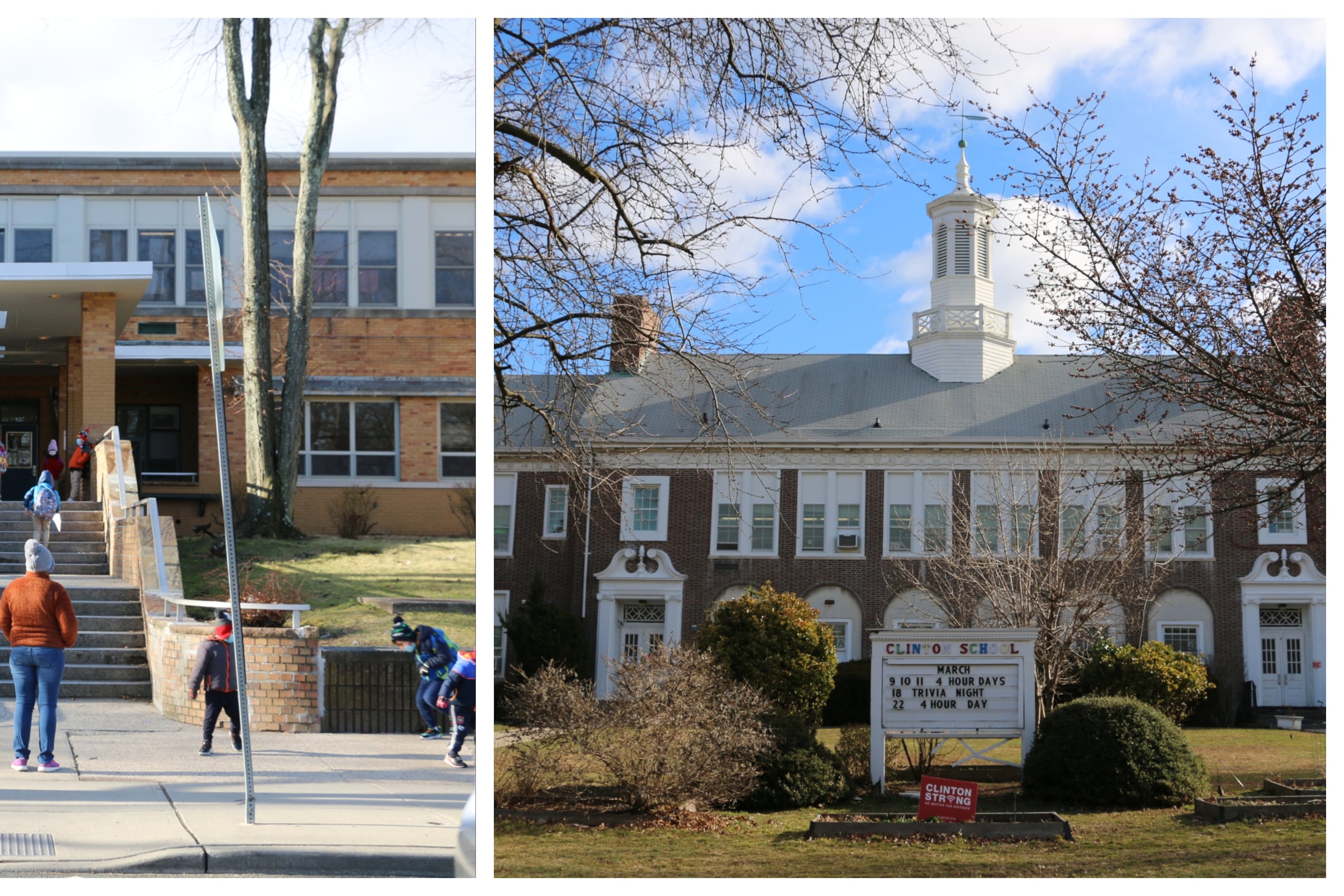Emma Barnes still remembers the time her granddaughter made a white friend at school.
Her granddaughter, Abia, was in kindergarten at Mount Vernon School in Newark. Abia, who is Black, was seated beside a quiet boy whose family had just emigrated from Russia. Abia took him under her wing and helped as he learned English. Before long, he was making friends and teaching his classmates Russian words.
“That was really cool,” Barnes recalled. “The kids loved him.”
Yet opportunities to make white friends are rare at Mount Vernon. While the elementary school has a diverse mix of Black, Hispanic, and Asian students, less than 1% of the enrollment is white.
The issue isn’t a lack of white families living nearby. Within walking distance of Mount Vernon sits Clinton Elementary School, part of the South Orange-Maplewood school district. At that school, 61% of students are white.
What separates the two schools is an impenetrable district boundary.
Under state law, most students must go to school in the districts where they live. Whether a child resides on the Newark or Maplewood side of the district line determines which public schools they can attend, what their classmates will look like, and how much local wealth flows into their schools. In Newark, the median household income is just over $35,000, according to U.S. census data; in Maplewood, it’s about $139,000.
Although many New Jerseyans don’t know it, a state program allows some students to cross district lines. Yet few students have been able to use the program, leaving the border between Newark and Maplewood and many other districts sealed.
Now, in a historic lawsuit that went before a state Superior Court judge last week, a coalition of families and civil rights groups are arguing that New Jersey’s closed-off districts have confined thousands of Black and Hispanic students to segregated schools. And one way they suggest the state could remedy the situation is by expanding the program that lets students switch districts.
Parents “should have the ability to send their kids, if necessary, across district lines to gain the benefits of a diverse and integrated education,” said Lawrence Lustberg, an attorney for the plaintiffs, at last week’s hearing. And the state “should encourage and foster and nurture that possibility.”
An opening for integration?
The decades-old Interdistrict Public School Choice program lets families apply to certain schools outside the districts where they live.
But the program’s growth has been stunted. Districts must opt into the program, and only about 120 out of some 600 districts have done so. In Essex County, not a single district has signed on, including South Orange-Maplewood.
Even if more districts wanted to participate, as some say they would like to, the state has stopped letting more join. And districts in the program cannot add more seats for transfer students even if demand grows.
As a result, just 5,000 students — or less than 1% of the statewide enrollment — use the program. And, partly because the districts surrounding majority Black and Hispanic cities like Newark and Paterson don’t accept transfers, families who use the program are disproportionately white.
Christian Estevez is one of the advocates who believes New Jersey will never shed its distinction as having some of the country’s most segregated schools unless those district barriers are pried open. Today he is president of the Latino Action Network, one of the plaintiffs in the segregation case, but years ago he was a school board member in Plainfield, where about 75% of students are poor and fewer than 1% are white.
“What I realized by the end of my term is that we can do all this stuff and make changes around the edges, but the core problem still exists,” he said. “Who do you integrate with if every school is basically poor?”
The judge in the segregation case is expected to issue a ruling in the coming weeks. If he sides with the plaintiffs then the state could appeal, but it eventually may have to come up with a desegregation plan — which could include expanding the district choice program.
Meanwhile, the pandemic might actually have made expansion easier. School enrollment declined statewide after school buildings closed. In Essex County, for example, 20 of 23 districts lost students last school year, according to state data. Any seats that remain open could create space for transfer students.
Glen Ridge, an affluent, majority-white district about five miles north of Newark, previously chose not to join the choice program because of limited capacity, said school board President Elisabeth Ginsburg. But now the district has more space and would consider joining — if the state lets the program grow.
“We would certainly take a look at it,” she said.

Barnes, whose granddaughter is now a fourth-grader at Mount Vernon, suspects that racial bias has played a role in some districts’ decision not to accept transfer students.
“Rather than come together and make this thing work for the sake of the children, they’d rather just keep them on the other side of the gate,” she said.
If the state did expand the choice program, some communities would put up a fight, she predicted. Yet she also believes that many people will welcome a chance to integrate.
“Some people want change, some people want diversity,” she said. “Some people want equal opportunities.”
A popular choice program is ‘stymied’
New Jersey created the district choice program in 1999 as a small experiment, which let approved districts enroll students who live outside their borders. In its first year, only 10 districts and 96 students participated.
The program quickly attracted interest. Districts with declining enrollments used it to fill vacant seats and raise revenue. Families turned to it if they were dissatisfied with their nearby schools or sought offerings, such as performing arts or Advanced Placement courses, that weren’t available locally.
“It’s a fabulous program for the people in it,” said Marguerite Downham, a former state education department official who oversaw the program. “Parents love it.”
The program launched amid a nationwide push for school choice, which holds that students should not be bound to their neighborhood school. Charter schools are the best known form of choice, but district choice programs are older and found in almost every state.
More than 40 states allow families to transfer to other districts, according to a 2017 study; about half make it optional for districts to accept transfer students, while only 13 make it mandatory.
New Jersey’s program is voluntary, and after the state legislature made it permanent in 2010, a growing number of districts signed on. By 2015, 130 districts and more than 5,100 students participated.
But the program’s popularity backfired. Its cost ballooned to more than $50 million in 2015 because, under state law, districts that students left, as well as those they transferred to, both received special funding. (The program cost about $56.6 million this fiscal year.) In response, the state capped the number of districts and students who could participate.
“When you read the statute, it’s very clear that every kid is supposed to be able to take advantage of this,” said Dr. Robert Zywicki, the superintendent of Mount Olive School District, who wrote his doctoral dissertation on the district choice program. “However, that has never been the case.”
Glassboro, a diverse South Jersey district, is a poster child for the program.
After joining in 2010, the district created specialized academies in its high school where students can study the performing arts, medicine, or business while taking classes at nearby Rowan University. The program gives transfer students access to rigorous courses that might be unavailable where they live, and it covers the cost of the college classes for both resident and transfer students.
“Some districts do it to fill empty seats,” said Glassboro Superintendent Mark Silverstein. “Our goal here was to raise the academic bar.”
But Dr. Silverstein echoed many other superintendents in expressing frustration that the state stopped the program’s growth. Even as families clamor to get into the academies, Glassboro can only admit a total of 17 transfer students, which leaves only a few openings each year.
“It’s really stymied the program,” he said.
Michael Yaple, a spokesperson for the state education department, said program enrollment has been flat since 2015 due mainly to budget constraints.
“Due to limited state funding, among other factors, enrollment limits on choice districts were put in place and additional school districts have yet to be identified,” he said in an email.
Adding integration to the mix
Supporters of the district choice program, long accustomed to promoting its benefits for families and districts, have started making a new case for expansion: It could help desegregate schools.
The Interdistrict Public School Choice Association, which represents participating districts, submitted an amicus brief in the school segregation case pitching the program as a tool for integration. The voluntary program would be less divisive than “more drastic measures,” such as district consolidation, the group argued.
“It’s a great way of bringing diversity and choice,” said Valarie Smith, the association’s co-director.
District choice programs, sometimes called open enrollment, have been used for desegregation outside of New Jersey. For instance, in response to a 1995 lawsuit, Minnesota created a choice program that let Minneapolis students from low-income families transfer to suburban schools.
New Jersey’s program was not designed for integration. Yet it’s had that effect in some districts.
A 2006 report by researchers at Rutgers University-Newark found that a handful of districts grew more diverse by enrolling transfer students. In a recent survey by the choice association, about a third of the 69 districts that responded said transfer students boosted schools’ racial diversity. One district, Englewood, used the program to increase diversity at a high school as part of the settlement in a segregation case.
But the lack of an integration mandate has curtailed the program’s impact on diversity. In 2018-19, more than 60% of participants were white, compared with 40% of students statewide who are white, according to state data compiled by the district choice association. In many cases, white students use the program to transfer from one majority-white district to another.
“For the most part, the composition of choice students mirrors the composition of the resident student body,” then-state education commissioner, William Librera, wrote in a 2003 report. Despite a state law requiring the commissioner to report on the program annually, the education department has not issued a report in years.
Retooling the program to promote integration would require major changes. First, experts say, the legislature or education department should make integration an explicit goal of the program. The state also would likely have to lift the cap on student enrollment, ramp up promotion of the program, and offer financial incentives to entice more districts to join.
Several experts said the best way to broaden the program’s reach, and strengthen its potential for integration, would be to make it mandatory for districts with open seats to accept transfer students. But in a state where most education decisions are made at the local level, neither lawmakers nor the governor are likely to enact such a far-reaching change without a court order.
“I don’t know that there’s anything approaching a sufficient level of political commitment or courage to undertake something like that,” said Paul Tractenberg, a former Rutgers law professor who studies school segregation.
The pitfalls, and promise, of integration
There are other obstacles in the way of converting the choice program into a vehicle for integration.
One challenge is recruitment. Many families have no interest in sending their children to another district, which can entail lengthy commutes and social adjustments.
“I don’t want to have to bus my kid way across town when I have a school right here,” said Rev. Douglas Bell, the president of the neighborhood association in Newark’s Ivy Hill section, where Mount Vernon School is located. “The main thing is not to be moving kids to different districts. We just want to make sure the schools are comparable.”

Irvington Public Schools Superintendent Dr. April Vauss echoed that argument, saying it’s not fair to ask students of color to leave their communities in pursuit of great schools. She insisted that students can receive an excellent education in her district, where about 75% of students are Black and 24% are Hispanic. She also worried about engaged parents abandoning the district if the choice program is expanded, and Irvington children facing hostility if other districts were required to accept transfers.
“Do we want to go somewhere where someone has to be forced to take us?” she said. “Or do we want to build within our community?”
Even some advocates for the choice program fear a backlash if districts are ordered to participate.
“It’s designed to be a choice program,” said Downham, who co-directs the choice association. “When you start to force it, that’s when you get pushback.”
Another risk is that the program might unintentionally diminish some schools’ diversity. Wildwood, a racially diverse district where about 85% of students are economically disadvantaged, filed a brief in the segregation case saying it has lost white students as families use the choice program to switch districts.
“Our experience locally is that it’s contributing to the problem,” said Wildwood Superintendent J. Kenyon Kummings. He added that the state should closely monitor the program’s impact on school demographics.
For all its flaws, advocates say the program still holds promise for desegregation because it moves students across otherwise impassable district lines.
Estevez, the Latino Action Network leader, said some people might initially oppose efforts, like the choice program, that bridge the state’s divided districts. But he believes their fears will subside as they see children of different races and backgrounds learning side by side.
“The hope,” he said, “is that that kind of experience gets people to think differently.”
Patrick Wall is a senior reporter for Chalkbeat Newark, covering public education in the city and across New Jersey. Contact Patrick at pwall@chalkbeat.org.







